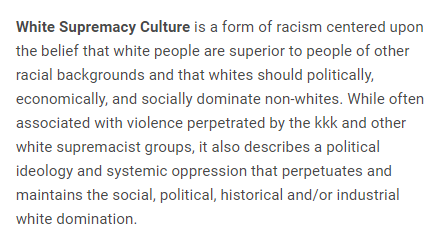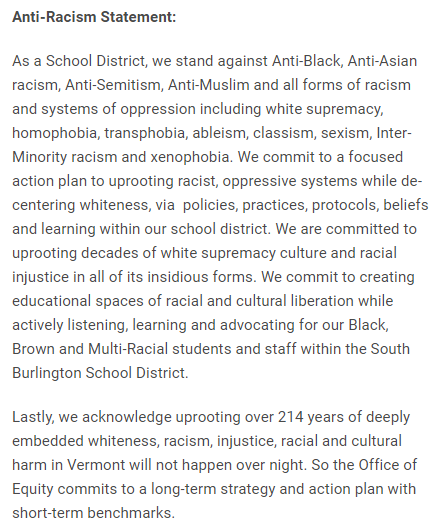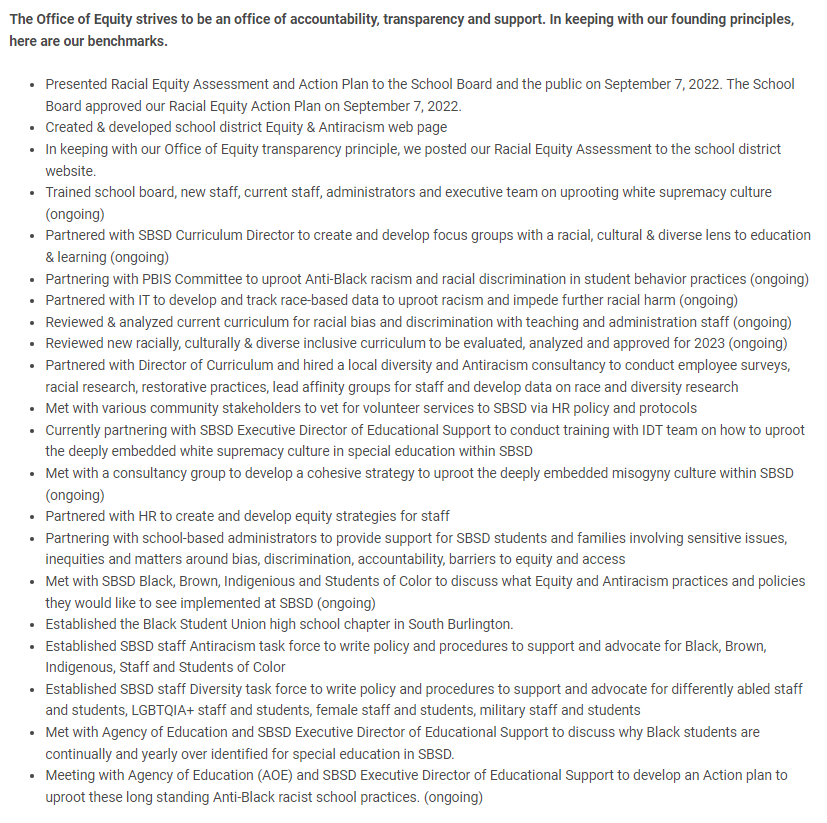
South Burlington School District has statement condemning so-called “White Supremacy Culture”; plans on “de-centering whiteness” and “creating educational spaces of racial and cultural liberation”
Incidents
The South Burlington School District has a statement online for a perceived “White Supremacy Culture.” The school district explains that “White Supremacy Culture is a form of racism centered upon the belief that white people are superior to people of other racial backgrounds and that whites should politically, economically, and socially dominate non-whites.” The district continues to explain that “it also describes a political ideology and systemic oppression that perpetuates and maintains the social, political, historical and/or industrial white domination.” The statement appears to be taken directly from the National Education Association (NEA), the nation’s largest teachers’ union.

The school district also has an “Anti-Racism Statement” that explains the school district stands against “all forms of racism and systems of oppression including white supremacy, homophobia, transphobia, ableism, classism, sexism, Inter-Minority racism and xenophobia.” The school district also explains that it will be actively “de-centering whiteness” and participating in “racial and cultural liberation”:
We commit to a focused action plan to uprooting racist, oppressive systems while de-centering whiteness, via policies, practices, protocols, beliefs and learning within our school district. We are committed to uprooting decades of white supremacy culture and racial injustice in all of its insidious forms. We commit to creating educational spaces of racial and cultural liberation while actively listening, learning and advocating for our Black, Brown and Multi-Racial students and staff within the South Burlington School District.
The school district then states:
Lastly, we acknowledge uprooting over 214 years of deeply embedded whiteness, racism, injustice, racial and cultural harm in Vermont will not happen over night. So the Office of Equity commits to a long-term strategy and action plan with short-term benchmarks.

The school district also has a page online providing the following equity benchmarks that are ongoing and will occur in the future:
- Trained school board, new staff, current staff, administrators and executive team on uprooting white supremacy culture
- Partnering with PBIS Committee to uproot Anti-Black racism and racial discrimination in student behavior practices
- Partnered with IT to develop and track race-based data to uproot racism and impede further racial harm
- Reviewed & analyzed current curriculum for racial bias and discrimination with teaching and administration staff
- Partnered with Director of Curriculum and hired a local diversity and Antiracism consultancy to conduct employee surveys, racial research, restorative practices, lead affinity groups for staff and develop data on race and diversity research
- Met with a consultancy group to develop a cohesive strategy to uproot the deeply embedded misogyny culture within SBSD
- Established the Black Student Union high school chapter in South Burlington
- Established SBSD staff Antiracism task force to write policy and procedures to support and advocate for Black, Brown, Indigenous, Staff and Students of Color
- Established SBSD staff Diversity task force to write policy and procedures to support and advocate for differently abled staff and students, LGBTQIA+ staff and students, female staff and students, military staff and students

The school district additionally has an “Executive Limitations Monitoring Report” for equity initiatives. The report provides data on students that is split into categories such as race, ethnicity, and gender. Action steps in the report include to “audit our K-12 Science and Math Curriculum for racism” and “employ restorative justice practices that center the voices of victims and observers when redressing incidences of discrimination.”
Stay Informed
